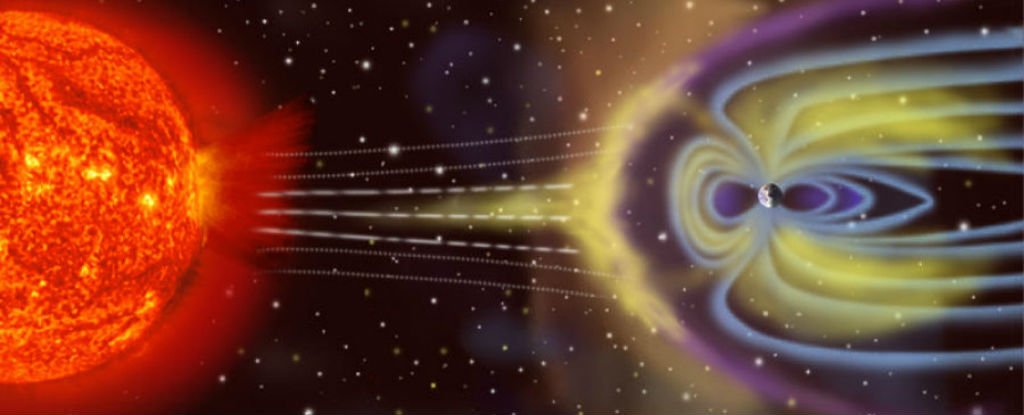In the region of space just outside Earth’s magnetic field, NASA has detected electrons that are being accelerated to almost the speed of light - and no one can explain why.
In fact, our current understanding of particle physics says this kind of acceleration should be impossible so far out from the magnetosphere, and now physicists are trying to figure out what kind of force can be pushing them to such speeds.
"This is a puzzling case because we're seeing energetic electrons where we don't think they should be, and no model fits them," says one of the researchers, David Sibeck from NASA's Goddard Space Flight Centre. "There is a gap in our knowledge, something basic is missing."
The high-speed electrons were detected by NASA’s THEMIS mission, which sent five satellites into Earth’s orbit to observe how our planet’s protective magnetic field captures and releases solar winds and cosmic radiation.
Their primary goal was to help scientists understand what triggers geomagnetic storms that can wreak havoc on communications systems on Earth, but once they hit the foreshock boundary region just outside of Earth’s magnetic field, they opened up a whole new set of questions.
High-energy electrons are constantly being hurled at us from the Sun, but are deflected by our super-strong magnetic field before they can pose any kind of threat.
When this interaction occurs, the electrons encounter the outermost layer of the magnetosphere called the bow shock, and its magnetic field slows them down, causing most of them to be deflected back into space.
But some of them will be reflected back towards the Sun, forming a band of high-energy, super-fast electrons just outside the magnetosphere called the foreshock boundary region.
For decades, it was assumed that these electrons got their energy and speed from being bounced back and forth across the bow shock.
Physicists thought that every time these particles collided with our magnetic shield, they got more and more energy, and could be accelerated to almost the speed of light.
But new observations from the THEMIS satellites have revealed that the electrons can also gain energy through electromagnetic activity in the foreshock region itself - and no one can explain how.
In fact, it looks like these electrons never even made it to the bow shock.
"The electrons ... could not have originated from the bow shock, as had been previously thought," says NASA.
"If the electrons were accelerated in the bow shock, they would have a preferred movement direction and location - in line with the magnetic field and moving away from the bow shock in a small, specific region."
Instead, the team found that the electrons were moving in all directions - not just along magnetic field lines - and the bow shock could only account for roughly one-tenth of the electrons' energies.
The researchers have concluded that the cause of the electrons' acceleration must be from within the foreshock boundary region itself.
"These findings may change the accepted theories on how electrons can be accelerated not only in shocks near Earth, but also throughout the Universe," says NASA.
The team plans on gathering more data from the THEMIS satellites to figure out how exactly these electrons are being accelerated to such incredible speeds, but one of the researchers, Lynn Wilson, suggests that we need to start thinking in much smaller scales in order to find the answers.

Comments
Post a Comment